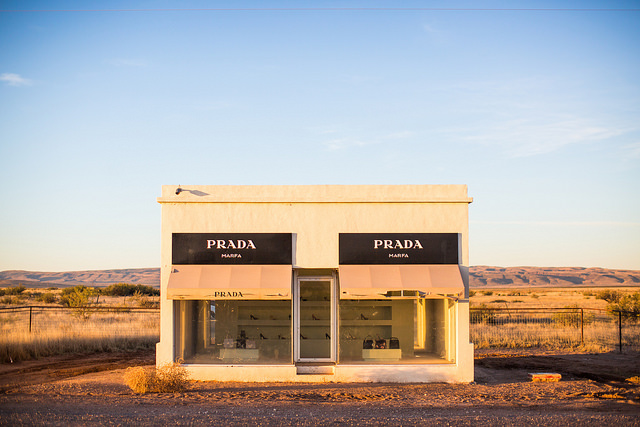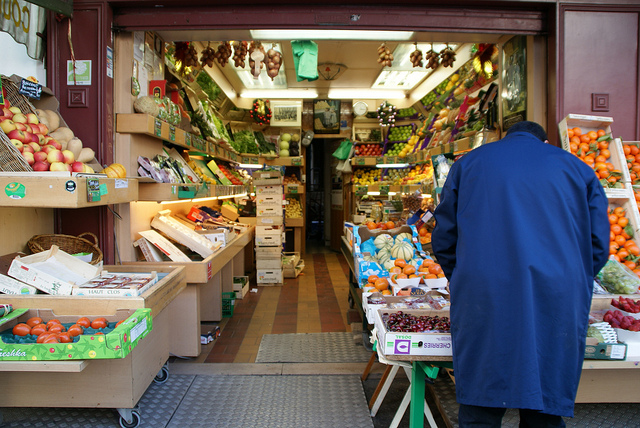Unlock the Magic in Your Story Now
Get the Free 20 questions to Ask Before Launching Your Idea workbook when you sign up for occasional updates.
Get the Free 20 questions to Ask Before Launching Your Idea workbook when you sign up for occasional updates.
Beyond Attention
 The black-gloved sales assistant in the jeweller’s window is busy polishing the stones in every ring. Totally absorbed in her task, she starts with the rubies, moves on to the emeralds and finishes with the diamonds. She carefully places them exactly two centimetres apart on velvet lining.
The black-gloved sales assistant in the jeweller’s window is busy polishing the stones in every ring. Totally absorbed in her task, she starts with the rubies, moves on to the emeralds and finishes with the diamonds. She carefully places them exactly two centimetres apart on velvet lining.
The stones sparkle under perfect lighting as the first customer pushes open the door. The two sales assistants glance up from their mugs of tea, then get back to their conversation.
We mistakenly expend most of our effort attempting to get people to take notice, polishing the stones, thinking our work is done. How much better would our marketing be if we stopped making attention the endgame and acknowledged that the real work of marketing is what comes next?
Image by Nefraton.
Share this article
5 Ways To Be A More Resourceful Marketer
 The problem with most marketing is that it not only feels inauthentic to the customer, it also relies on tired old tactics that do the opposite of what the marketer intended. It interrupts instead of inspiring, disconnects instead of delighting. We can do better.
The problem with most marketing is that it not only feels inauthentic to the customer, it also relies on tired old tactics that do the opposite of what the marketer intended. It interrupts instead of inspiring, disconnects instead of delighting. We can do better.
How To Be A More Resourceful Marketer
1. Pretend you have a marketing budget of zero dollars.
What would you do today to reach five new customers who would be thrilled to hear from you?
2. Stop looking over your shoulder at what your competitors or colleagues are doing.
Think about why you want to grow your business. What is your intention? What are you on a mission to do? Write it down.
3. Empathise with your customer.
Don’t think of your customers as a homogenous group. Think about one person who needs your product or service. Write down six things about him that are completely unrelated to your product or service. What did you learn? How does this change your marketing strategy?
4. Create your own definition of ‘good marketing’.
What does great marketing look, sound and feel like? Can you think of some examples that made you want to connect more deeply with a business or brand? What did they do differently?
5. Think small—avoid speaking to the market of everyone.
What’s the least number of customers you need to attract to build a sustainable business?
Who are they? Where are they? Why will they be delighted to hear from you?
We don’t have to be bound by industry standards and cookie cutter marketing formulas.
We get to choose how we tell our story.
Image by Thomas Hawk.
Share this article
The First Step To Mastering The Art Of Brand Storytelling
filed in Marketing, Storytelling, Strategy
 There are more than a dozen places to buy coffee in the commuter belt adjacent to Southern Cross Station. You can choose from artisan roasters, international cafe franchises or convenience stores and pay as little as $1 or as much as $5 for a takeaway coffee—all within 30 metres of the station. So how do people choose?
There are more than a dozen places to buy coffee in the commuter belt adjacent to Southern Cross Station. You can choose from artisan roasters, international cafe franchises or convenience stores and pay as little as $1 or as much as $5 for a takeaway coffee—all within 30 metres of the station. So how do people choose?
It’s clear that each cafe tells a very different brand story using price, design, location and more to communicate to the particular customer they want to attract and serve. The perception of value drives some customers. Others are drawn by convenience, the ambience of the venue or simply the ritual that feels best. Each customer has a different worldview about the value of a $5 coffee. And yet if you stood on the pavement outside the station you’d find it hard to tell those customers apart.
So where does a business owner begin? The first step to attracting (and keeping) the customers you want is to understand what it is they want. What do they believe in, care about or fear? Where do you come in? Your business can’t fulfil the unspoken desires and unmet needs of a customer you haven’t fully understood.
The biggest challenge to telling better brand stories isn’t that we don’t have a story to tell. It’s that we’re not telling a story that matches the worldview of our prospective customers. It doesn’t matter how good your product or service is if you don’t understand the worldview of the person who will buy it. The first step to mastering the art of brand storytelling and being a better marketer is to stand in your customer’s shoes.
I created the Story Strategy Course to enable you to do exactly that. If you want to find more ways to resonate with customers and differentiate from your competitors. If you’d like to understand where to devote your marketing resources and why. If you’d like to simply get better at telling the story of the value you create this course will show you how.
Registrations are open now. We start at the end of the month. If you’re ready to take the first step to telling a better story, I hope you’ll join us.
Image by Linh Nguyen.
Share this article
The Best Opportunity
 One of the best things about our family’s move to Melbourne two years ago has been the rediscovery of local shopping strips. In beautiful Perth, where we lived for ten years, our grocery shopping involved a car trip to one of the dominant, big chain supermarkets. In Melbourne, we live a two-minute stroll from a tiny local bakery and an organic grocery shop. Needless to say, I’m in the organic shop every day (sometimes twice) for something—fresh bananas for morning smoothies or a forgotten herb for dinner. The range and quality of the food are excellent, and the staff are pleasant—but their smiles never quite reach their eyes. Like many of the other regular customers who pop in daily or weekly I’m not greeted by name, in fact, it almost feels like I’m a brand new customer every time I shop there. What a missed opportunity!
One of the best things about our family’s move to Melbourne two years ago has been the rediscovery of local shopping strips. In beautiful Perth, where we lived for ten years, our grocery shopping involved a car trip to one of the dominant, big chain supermarkets. In Melbourne, we live a two-minute stroll from a tiny local bakery and an organic grocery shop. Needless to say, I’m in the organic shop every day (sometimes twice) for something—fresh bananas for morning smoothies or a forgotten herb for dinner. The range and quality of the food are excellent, and the staff are pleasant—but their smiles never quite reach their eyes. Like many of the other regular customers who pop in daily or weekly I’m not greeted by name, in fact, it almost feels like I’m a brand new customer every time I shop there. What a missed opportunity!
In life and business, we’re often guilty of pursuing the next opportunity—those elusive two birds in the bush. We ignore the moment that is staring us in the face right now to embrace an advantage or make a difference.
The organic shop doesn’t need to work for my loyalty because it’s convenient, but they should be working harder for my love. As business owners, we innovate and market to sustain tomorrow’s growth—while sometimes ignoring the opportunity to create an impact today.
The best opportunity might be the one we have our back to at this very moment.
Image by G. Morel.
Share this article
When Does Your Marketing Start?
 The conventional definition of marketing describes it as the activities we do to promote sales of products or services. If we accept this definition, then the bulk of our marketing is done once we’re ready to sell our product.
The conventional definition of marketing describes it as the activities we do to promote sales of products or services. If we accept this definition, then the bulk of our marketing is done once we’re ready to sell our product.
Tactics like list building, data collection, content creation, social media outreach, networking events and leaflet drops might make us better promoters, but they don’t make us better marketers. Unlike the gelato seller who relies on sweltering summer days and the tinkling music from his van to make hay while the sun shines—the best marketers understand that marketing is not just about building awareness. It’s about establishing trust on the road to creating meaning and forging connections, loyalty and love. The kind that makes people queue for a $5 cone even on the coldest winter day.
Your marketing starts with your intention to create products and services that make a difference to the people you serve.
Image by Sebastian Rieger.
Share this article
What You Want To Say Vs. What People Need To Hear
filed in Marketing, Storytelling
 Every one of us has a story to tell—something we want someone to hear. So we begin crafting our messages by prioritising our need to be heard. The irony is the best way to make an idea resonate is not to start with all the things you need to get off your chest, but instead to think about who’s listening and what they need to hear.
Every one of us has a story to tell—something we want someone to hear. So we begin crafting our messages by prioritising our need to be heard. The irony is the best way to make an idea resonate is not to start with all the things you need to get off your chest, but instead to think about who’s listening and what they need to hear.
Before you send the email, write your sales copy or draft that proposal stop for a moment to consider what the person who will read it is doing, thinking and feeling right now.
What would you say to him if you were looking him in the eye in that moment? Start there.
When we get this right, it’s the difference between a music player with a 5 GB hard drive and 1000 songs in your pocket. And more importantly, it creates a world full of intentional and thoughtful ideas, stories and connections we can be proud of.
Image by Sebastian Rieger.
Share this article
The Art Of Discovering Opportunities
 How often do we look down when we could look up?
How often do we look down when we could look up?
How often do we do the obvious instead of exploring what’s been overlooked?
How often do we sit tight when we could dive in?
How often do we make excuses instead of making our mark?
How often do we look away when we could look closer?
How often do we decide to follow instead of taking the lead?
How often would we choose to fail if we saw failure as a stepping stone on the path to opportunity?
Image by Kevin.
Share this article
How Are Your Customers Convinced?
 Real estate agents get more new listings from the refferrals made by satisfied sellers, than they do from letterbox dropping flyers.
Real estate agents get more new listings from the refferrals made by satisfied sellers, than they do from letterbox dropping flyers.
Hotel rooms are increasingly booked on the strength of previous guest reviews on Trip Advisor, not because of the room sizes and facilities published on their website.
New gym members are often persuaded to join by friends who are already members, while they mostly ignore the newspaper and TV ad campaigns in January.
We allocate marketing resources to promote our businesses in the places where we think our customers are paying attention, often without fully understanding the real impact of the investment we’re making or the potential of the opportunities we’re ignoring. It’s possible to overestimate the effect of lead generation tools and tactics while underestimating the power of a handshake.
How are your customers convinced?
Are you creating opportunities to meet and market to those prospective customers where they are?
Image by Garry Knight.
Share this article
The Business Of Trust
filed in Strategy
 Trust enables every human exchange. Our society can’t function without it. The belief we have in each other’s promises is so great that it even transcends our immediate circle in the physical world. We order books, book hotel rooms and ride in cars with strangers on the word of others who have recommended them.
Trust enables every human exchange. Our society can’t function without it. The belief we have in each other’s promises is so great that it even transcends our immediate circle in the physical world. We order books, book hotel rooms and ride in cars with strangers on the word of others who have recommended them.
Trust is also the foundation of every business. A business is not merely an organisation that creates value or exchanges goods and services for money. It is the promises we make to our customers in return for their trust. When we put a price on a pair of running shoes or a PayPal button on our website, we’re inviting people not just to buy something, but to trust that we will deliver on the promises we’ve made to them.
The first and last goal of every business is to make promises and then to keep them.
What are you promising your customers? And how are you ensuring those promises are kept?
Image by Alexander Redl & Unsplash.
Share this article
Getting The Story Formula Right
filed in Storytelling, Strategy
 I often get emails asking about the right and the wrong way to tell a brand story. Questions like:
I often get emails asking about the right and the wrong way to tell a brand story. Questions like:
How long should the story be?
Should we start this way or that?
What’s the best medium to use?
The more important point to consider is not the length of the story or where to begin but how well the story connects with the audience. A good story resonates so well with the intended audience that it changes how they feel and moves them to act.
6 Questions To Ask Before Beginning To Tell Your Brand Story
1. Why are we sharing this story?
2. Who is this story for?
3. What does our intended audience care about?
4. How can we meet our audience where they are?
5. What will our story invite them to believe in or do next?
6. How will we know if our storytelling has succeeded?
The best brand stories begin with the end in mind.
Image by Aaron Guy Leroux.